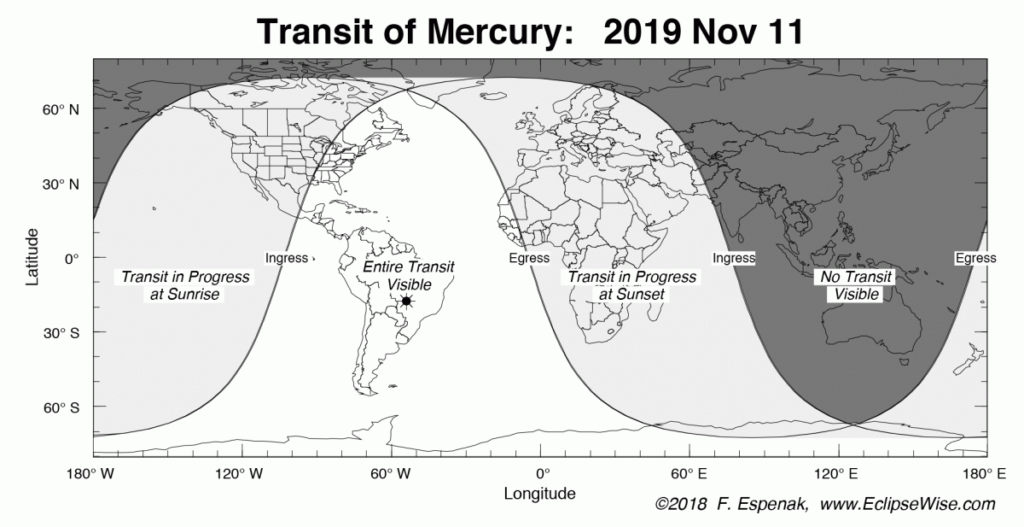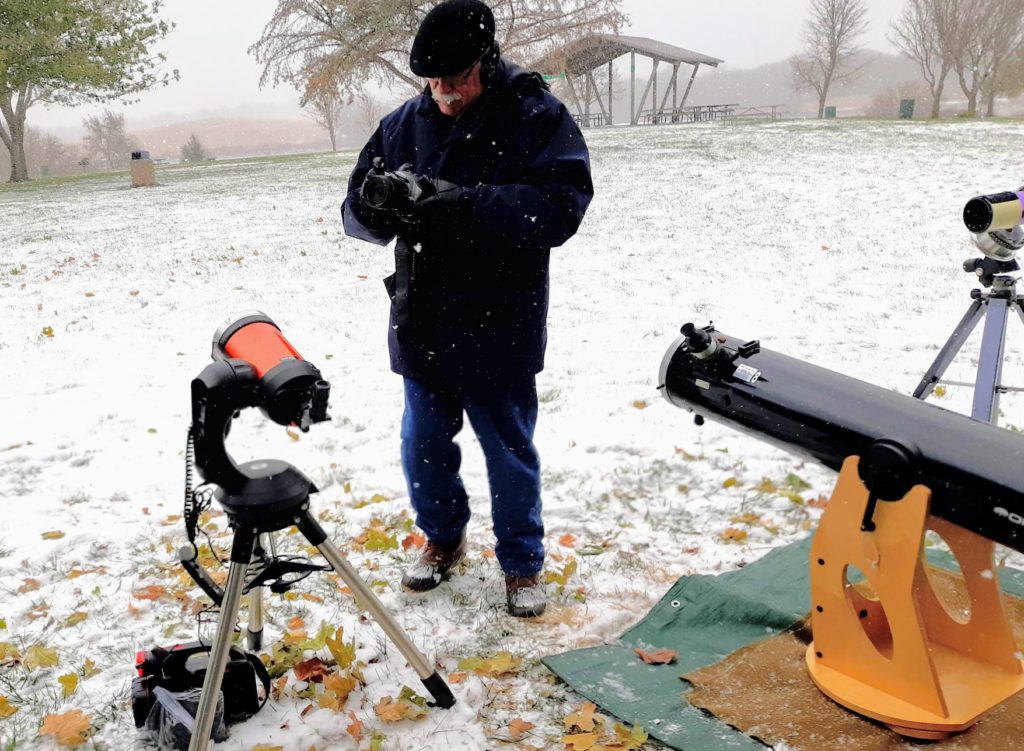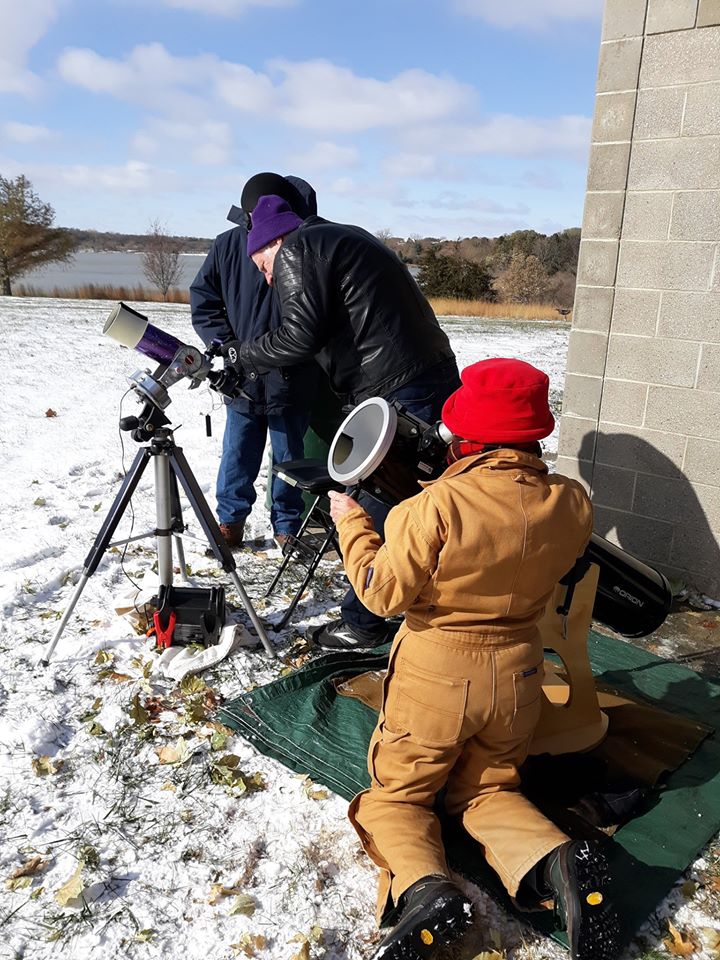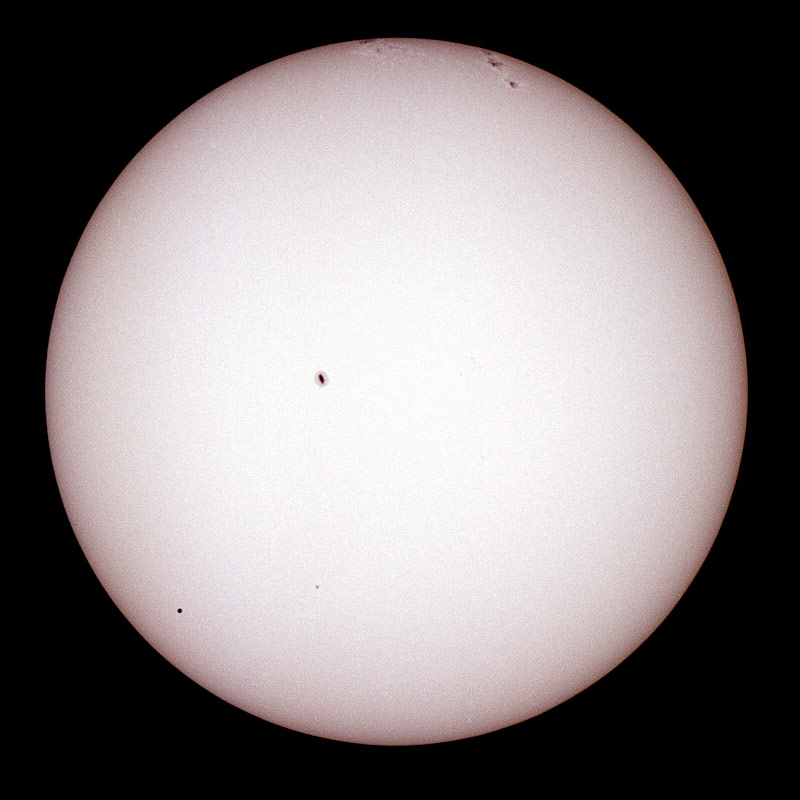On Monday, November 11, we had an opportunity to witness an interesting and relatively rare celestial phenomenon – the transit of Mercury across the Sun. This event is essentially an eclipse of sorts – except Mercury is much farther from Earth than the Moon. Consequently, its apparent size is rather small, and it’s not able to cover a significant portion of the solar disk – let alone make the Sun disappear completely.
Transits of Mercury are also less frequent than the solar eclipses – the last one happened on May 9, 2016. However, the transit can be observed on a large portion of the planet where the Sun is above horizon during the event, while the path of the total solar eclipse is usually less than 100 miles across. Thus, an illusion is created that the eclipses are more unique – and for any particular location on Earth it will usually be true.

The weather did not favor observation of the transit here in Midwest: after enjoying a very warm and mild Saturday (with daytime maximum temperatures climbing up into mid-60s), and somewhat pleasant Sunday, the snap of cold arctic weather intruded the area quickly on Sunday night into Monday. We woke up to 1-2″ of fresh snow, overcast, and bitterly cold 10 F.

Despite that, some of the most brave representatives of the Omaha Astronomical Society gathered with their telescopes at the Lake Zorinsky Park in southwestern Omaha, and patiently waited for the skies to open up. Their perseverance was rewarded, and the partly cloudy sky allowed for some observing in the last hour of the transit.

This event reminded me about my first transit of Mercury that I observed on May 7, 2003. I was only making my first steps in solar photography with digital cameras, after having some experience with the film during the solar eclipse of August 11, 1999. This was also my first experience with webcam planetary imaging techniques, where stacking of multiple frames is applied to reduce the noise and enhance details on the picture captured with a high frame rate video camera.


There will be quite some time to wait until the next transit of Mercury that will happen on November 13, 2032 – another potentially cold one, unless I move somewhere farther south. Meanwhile, I will be looking for other interesting events – such as the Great American Eclipse of 2024, that I am starting to plan soon!